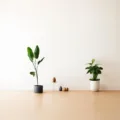In a world where consumerism is the norm, there’s a growing movement that advocates for a different approach: minimalism. Living with less is not about depriving yourself, but rather about finding freedom and fulfillment in simplicity. This article explores the concept of minimalism, its benefits, and how to start this transformative journey.
What is Minimalism?
Minimalism is a lifestyle that helps people question what things add value to their lives. By clearing the clutter from one’s life, it becomes possible to focus on what’s important. This can mean different things for different people; it’s not just about owning fewer possessions, but also about making more room for joy, engagement, and purpose.
Benefits of a Minimalist Lifestyle
Embracing minimalism can lead to numerous benefits, from decreased stress to improved financial health. A minimalist approach can also contribute to a more sustainable lifestyle, reducing one’s carbon footprint and promoting environmental consciousness.
- Reduced Stress: A decluttered space can lead to a decluttered mind. With fewer distractions and less to clean, you can experience a more peaceful home environment.
- Financial Savings: By purchasing less and focusing on quality over quantity, you can save money and avoid the cycle of constant consumerism.
- More Free Time: With fewer possessions to manage, you’ll have more time to spend on hobbies, relationships, and personal growth.
- Environmental Impact: A minimalist lifestyle often results in less waste and a smaller ecological footprint, contributing to conservation efforts.
How to Start Living with Less
Beginning a minimalist lifestyle doesn’t have to be a drastic change. Start small by decluttering and questioning the necessity of your possessions. Focus on the essentials and what brings you joy, and be mindful of your purchasing habits moving forward.
Overcoming Challenges
Transitioning to a minimalist lifestyle can come with its set of challenges. Emotional attachment to items, the pressure to conform to societal norms, and the fear of scarcity can all be obstacles. However, with deliberate practice and reflection, these can be overcome.
Minimalism in Practice
Living with less is a personal journey and can be adapted to fit your unique lifestyle. Some people choose to downsize their homes, while others focus on reducing their wardrobe or digital clutter. The key is to make intentional choices that align with your values and goals.
FAQs about Living with Less
Is minimalism just about getting rid of things?
No. While decluttering is a part of it, minimalism is more about intentional living and finding happiness in what you truly value.
How do I handle sentimental items?
It’s okay to keep items that hold significant emotional value. The goal is to ensure that everything you keep has a purpose or brings joy.
Can families practice minimalism?
Absolutely. Minimalism can be beneficial for families by fostering closer relationships and reducing collective stress.
Does minimalism mean I can’t buy new things?
No, it means being more thoughtful about new purchases and ensuring they add value to your life.
Will minimalism make me happier?
While it’s not a guaranteed path to happiness, many find that minimalism reduces anxiety and increases contentment by prioritizing what’s truly important.









